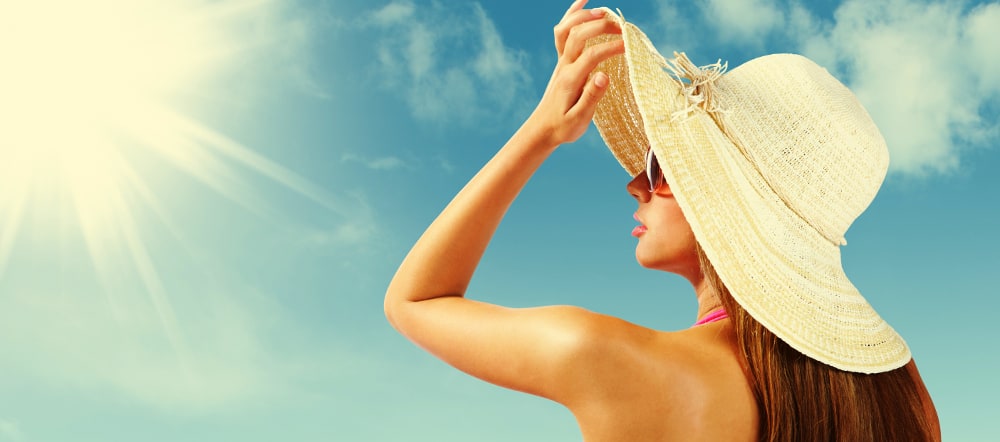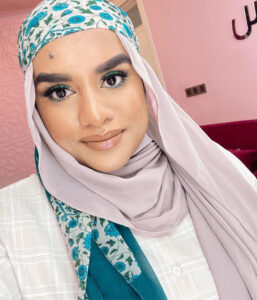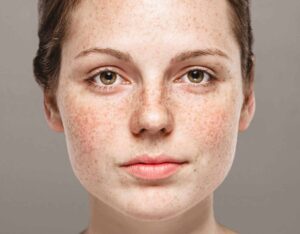
5 Reasons Why Every Maldivian Should Wear Sunscreen
Do you live in the Maldives and yet have never used sunscreen on your skin? For a country through which the equator passes, it is quite surprising that a vast majority of Maldivians do not use sunscreen. While health care experts all around the world advise to constantly use sunscreen even on cloudy days, Maldives is a country where the temperature remains almost the same throughout the year from around 31 degree Celsius in day time to 23 degree Celsius at night time. So, it does not make sense why a lot of Maldivians treat SPF like a stranger. If you live here in Maldives and have been careless in using sunscreen, we are about to give you some major reasons why you will never again want to skip sunscreen.
- EQUATOR PASSES THROUGH THE MALDIVES

The sun’s ultraviolet (UV) rays cause damage to your skin and can cause skin cancer. The more time you spend in the sun, the higher your chances are of getting skin cancer. According to the University of Rochester Medical Center, this risk is even higher for people who live closer to the equator. If you didn’t already know this, the equator quite literally passes through Maldives! If that alone is not enough to convince you to lather on sunscreen before you head out, just keep reading.
- SKIPPING SUNSCREEN CAN LEAD TO SKIN CANCER

Dr. Lisa Ginn – a board certified dermatologist and skincare.com expert explains. “Sunscreens were originally invented for UVB rays because we suspected for years that these rays caused sun damage in the form of basal cell carcinoma and squamous cell carcinoma (two forms of skin cancer). A few years ago, research showed that UVA rays, the rays that we held responsible for wrinkles and dramatic skin aging, were also causing melanoma.” While non-melanoma skin cancer often has a high survival rate, melanoma does not. According to the Skin Cancer Foundation, “melanoma accounts for less than one percent of skin cancer cases, but the vast majority of skin cancer deaths.” Dr. Ginn says that this research is what caused there to be a higher priority on UVA protection and the reason why you should always look for broad-spectrum (which means it offers protection against both UVB and UVA rays) on the label of your sunscreen.

The MISSHA – All Around Safe Block Aqua Sun Gel SPF50+ PA++++ (available from our store) blocks both UVA and UVB rays. SPF stands for ‘sun protection factor’ and the 50 in SPF50 refers to the amount of protection the sun screen offers against UVB rays (the main cause of sunburn) compared to unprotected skin. SPF 50+ sunscreens are formulated to allow fewer damaging rays to reach your skin’s surface than lower SPF sunscreens. For example, when applied correctly, SPF30+ allows 3.3% of UVB rays to reach your skin while SPF 50+ allows only 2% to reach your skin. This means with SPF50+ 98% of UVB rays cannot reach your skin! It is important to note that SPF level only protects you from UVB rays and doesn’t protect you from UVA rays responsible for wrinkles, dramatic skin aging and melanoma. This is where the PA grading system often included in Asian sunscreens is important.
“The PA rating system was originally established in Japan as a method of informing consumers of the level of protection provided by sunscreen. The pluses indicate the hierarchy of protection available. The more pluses, the higher the protection,” says Melissa Lekus, an esthetician based in Los Angeles.
The rating system is as follows:
PA+ = Some UVA protection
PA++ = Moderate UVA protection
PA+++ = High UVA protection
PA++++ = Extremely High UVA protection
These ratings correlate directly with something called “Persistent Pigment Darkening” (PPD), which refers to how long it takes for the skin to tan. If your product has a PPD of 2, then it takes twice as long for your skin to tan when protected versus how long it would take while unprotected. If your product has a PPD of 5, then it takes five times as long.
The correlations are as follows:
PA+ = PPD between 2 and 4
PA++ = PPD between 4 and 8
PA+++ = PPD between 8 and 16
PA++++ = PPD of 16 or higher
- SUNSCREEN REDUCES THE RISK OF HYPERPIGMENTATION

At SKIN TREATS, one of the main skins concerns our customers come to us with is (you guessed it) – hyperpigmentation; a common skin condition which is caused by sun exposure. Hyperpigmentation is when your skin is darkened in patches due to changes in melanin production. Melanin is the pigment which gives your skin color. All individuals who have approached us with concerns of hyperpigmentation are almost always looking for a product to reduce the effects of it, when what’s equally important is how to prevent it. Folks, just apply your sunscreen every day! It’s not that hard, you will actually grow to love it and before you know it, you will be refusing to step outside without it!
- SUNSCREEN PREVENTS PREMATURE AGING.

Yeap, just as much as you love (or will love later in your life) to apply anti-aging products, maybe it’s time to do something to prevent effects of skin aging before it happens. Prevention is after all always better than cure. According to Dermstore, “the culprits of the aging process are divided into two categories: intrinsic aging (influenced by genetics) and extrinsic aging (induced by chronic exposure to the sun’s radiation, pollution, chemicals and other environmental factors). UV radiation causes the premature breakdown of collagen and elastin in skin, resulting in fine lines and wrinkles. It also damages pigment-producing cells called melanocytes, resulting in the overproduction of melanin causing hyperpigmentation. The sun’s ultraviolet radiation is responsible for an estimated 90 percent of visible signs of aging. Regular use of sunscreen allows you to enjoy smooth, youthful-looking skin for years longer.” If you don’t believe us, just take it from them.
- UVA RAYS PENETRATE CAR & PLANE WINDOWS.

If you thought “well I’ll just go for a drive without stepping out, so I don’t need sunscreen,” you are wrong. As we have discussed earlier, there are two types of sun’s rays that hit the Earth directly; UVB rays (which are shorter and cause sunburns) and UVA rays (which are longer and penetrate deeper into your skin). Although the glass used in car and plane windows may block UVB rays, it does not block UVA rays and therefore exposes you to a risk for a sunburn when the sun comes through side windows. It surely is a sneaky way to be exposed to UVA rays, so don’t let your car windows give you a false sense of security.
Share:
Categories
Latest Post

Benefits of Aloe Vera for Skin, Hair and Body

A Makeup Artist’s Guide To Perfect Pre-Makeup Skin

